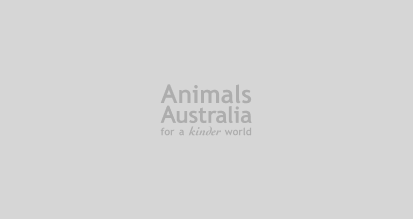We harp on about factory farms quite a bit. Not only because most animals raised for food in this country are living in them — but because life in a factory farm isn’t really a life at all. It’s pain, deprivation, boredom, and suffering.
Also, because pigs and chickens are pretty amazing animals with unique personalities who are every bit as smart and social as cats and dogs…
So when we see signs that our collective efforts to end factory farming are working, it’s reason to celebrate. Here are 5 reasons we’re celebrating today:
Fast food outlets got the message.
After weathering months of intense public pressure, and a looming TV campaign, McDonald’s Australia announced a complete phase-out of cage eggs — their announcement echoed only days later from Subway Australia who are phasing out cage eggs across all of their 1,400 stores! Hungry Jack’s is the latest fast food giant to step up for hens in the wake of relentless public feedback. And if three of the fast food industry’s biggest egg users can stop depending on battery cages — so can the rest.
Big retail is getting it.
In response to customer feedback, both Coles and Woolworths have stopped sourcing their own brand pork, bacon and ham products from suppliers that confine pregnant pigs in tiny crates. The ‘big two’ are also actively reducing the number of cage eggs on shelves — with Woolies ACT now completely cage-egg-free! Not to be outdone by one IGA supermarket in Victoria that recently removed all factory-farmed eggs (cage AND barn-laid) from its shelves effectively overnight after the release of shocking undercover footage.
More cruelty-free products.
In deliciously good news for ethically minded shoppers, the demand for cruelty-free products is growing — and so is the product range! Fry’s have just released a stack of brand new meat-free convenience products. And old favourites like Linda McCartney, Sanitarium and the ever-expanding home-brand meat-free range
is gaining shelf space, too!
It’s illegal in the A.C.T.
In an Australian first, several of the cruelest factory farming practices have now been outlawed in the Australian Capital Territory. One down…
You.
Because of so many reasons, you are the biggest reason we’re celebrating. The very fact that you are reading
this shows that you’re one of the millions of people who care. You’re voting with your dollar every time you shop. You’re talking to friends, to supermarket managers, and to your workmates… You are the reason that Animals Australia had he funds to launch its most ambitious campaign in history — Make it Possible. And your support shows fast food giants, retailers, governments and industries that they have no choice but to listen when Australians demand an end to cruelty. Hands down, you are the reason we will win the fight against factory farming.
When we embarked on the Make it Possible journey two years ago, we knew factory farming wouldn’t end overnight. It would take time, commitment, creativity and relentlessness. There is still much work to be done, but it’s never been clearer that we are heading in the right direction.
Every day, over one million Australians are being reminded of the power they have to free animals from factory farms. Whether it’s on taxi-backs, billboards, social media or television, our relentless
public awareness initiatives continue to reach hearts and minds.
Three powerful ways to stick it to factory farms today:
- Join the the fighting fund by pledging a monthly donation to help end factory farming.
- Share this empowering progress update with friends.
- Take back your consumer power
— click here for a whirlwind guide to cruelty-free living.






